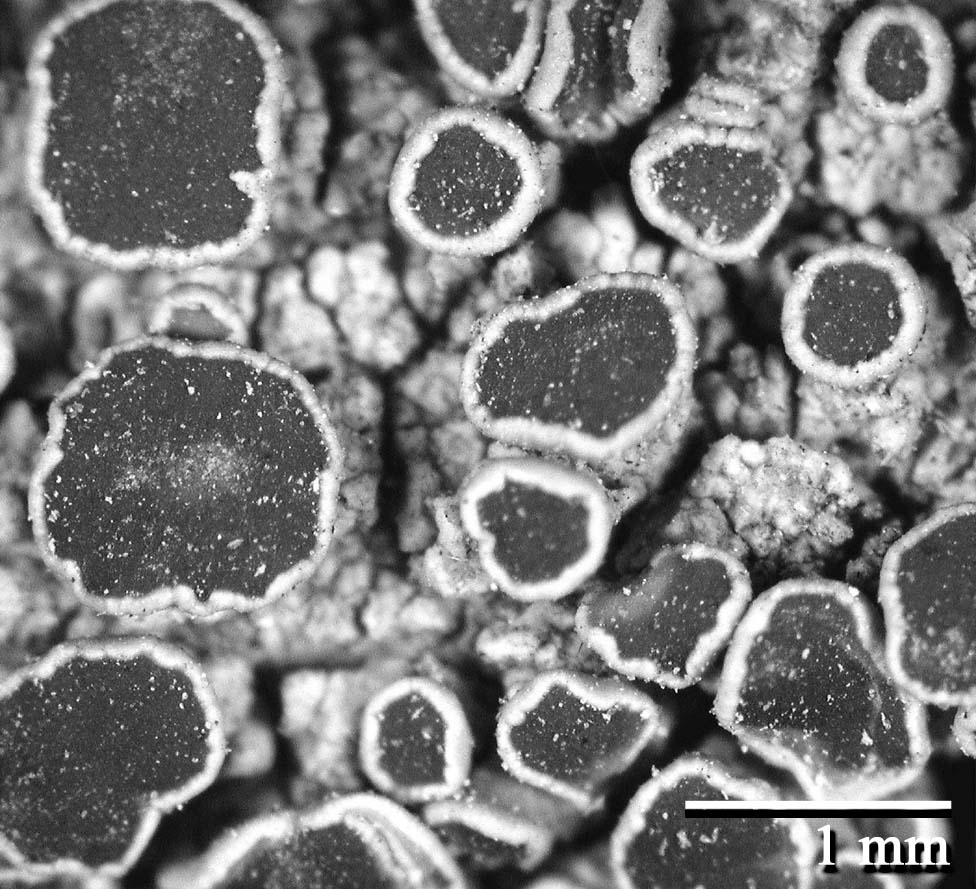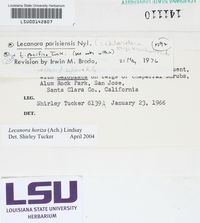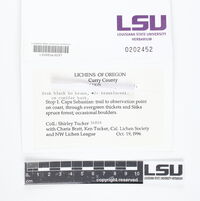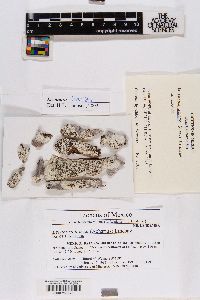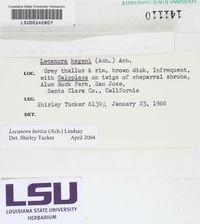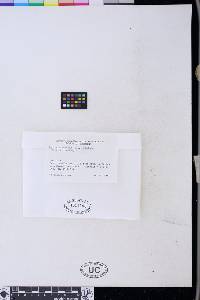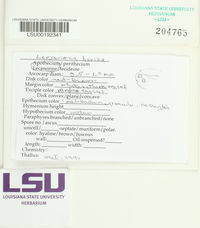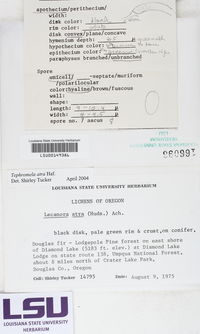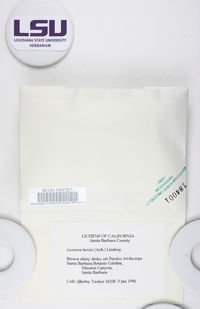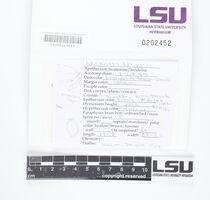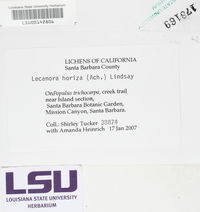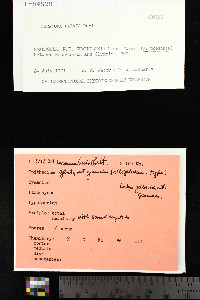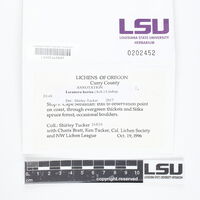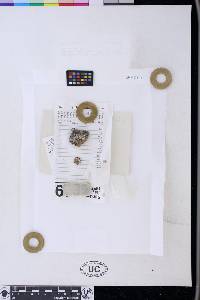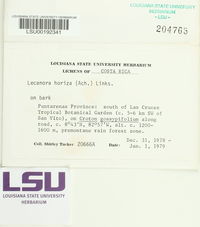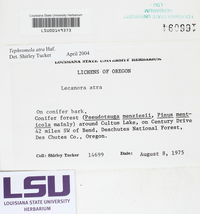
Consortium of Lichen Herbaria
- building a Global Consortium of Bryophytes and Lichens as keystones of cryptobiotic communities -
- Home
- Search
- Images
- Species Checklists
- US States: O-Z >
- US National Parks
- Central America
- South America
- US National Parks
- Southern Subpolar Region
|
|
|
|
Family: Lecanoraceae
[Lecanora laevis Poelt, moreLecanora parisiensis Nyl., Lecanora subfusca f. parisiensis (Nyl.) Hue, Lecanora subfusca var. horiza Ach., Zeora horiza (Ach.) Flot.] |
Nash, T.H., Ryan, B.D., Gries, C., Bungartz, F., (eds.) 2004. Lichen Flora of the Greater Sonoran Desert Region. Vol 2. Thallus: crustose, continuous or verrucose-areolate, flat or verrucose or verruculose; prothallus: not visible, or white areoles: thin or thick, opaque, ecorticate surface: yellowish white to yellowish gray or whitish gray to gray, smooth or rough, epruinose, with an indistinct margin, esorediate Apothecia: sessile or adnate or constricted at the base to almost subpedicilate, 0.5-1.5 mm in diam., lecanorine disc: red-brown or brown or orange-brown, plane, epruinose margin: concolorous with thallus, thin or thick, persistent, even, not flexuose, smooth, entire, without a parathecial ring amphithecium: present, with numerous algal cells, with numerous small crystals which dissolve in K, corticate; cortex: hyaline, distinct, basally thickened, gelatinous or interspersed, 15-25 µm thick laterally, 35-120 µm thick basally parathecium: hyaline, lacking crystals epihymenium: red-brown to orange-brown, with pigment not dissolving in K, without crystals hymenium: hyaline, clear; paraphyses: thickened (up to 4 µm wide) apically, red-brown to orange-brown; subhymenium: hyaline, 1520 µm thick; hypothecium: hyaline, without oil droplets or inspersed with oil droplets asci: clavate, 8-spored ascospores: hyaline, simple, ellipsoid or broadly ellipsoid, 11.5-17 x 6-9.5 µm; wall: less than 1 µm thick Pycnidia: subimmersed, cerebriform or ovoid; conidiophores: type II sensu Vobis conidia: filiform Spot tests: K+ yellow, C-, KC-, or P- to P+ pale yellow Secondary metabolites: atranorin (major), chloroatranorin (minor), and unknown triterpenoids. Substrate and ecology: on bark of deciduous trees and wood World distribution: Africa, Europe, and North America Sonoran distribution: Arizona, southern California, Baja California, Baja California Sur, Chihuahua, and Sinaloa. Notes: Lecanora horiza is one of the L. subfusca group with small amphithecial crystals. It is characterized by a distinct amphithecial cortex, an egranulose epihymenium, and relatively small ascospores. It is similar to L. allophana that differs in having an indistinct cortex and larger ascospores. Several taxa were described in the L. horiza group, including L. elapheia Stizenb., and L. sienae de Lesd. The relationships of these taxa are unsettled and require further investigation. |
Powered by Symbiota

